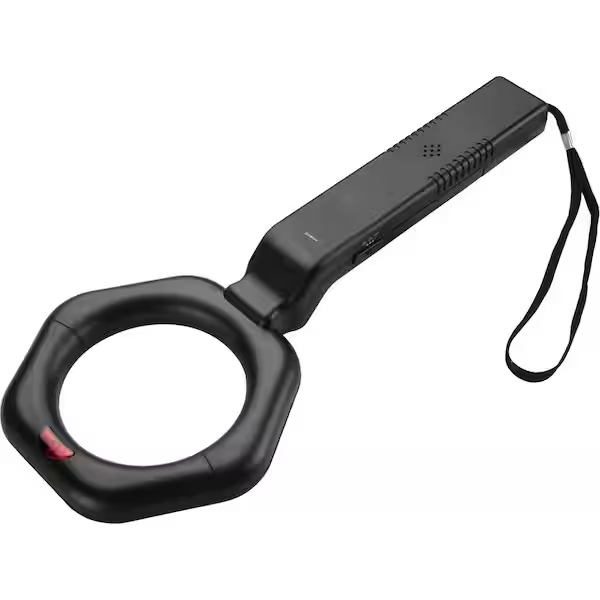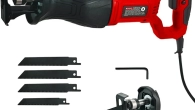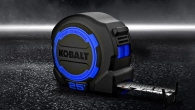
Metal Detectors: A Guide to Finding Hidden Treasures
Metal detectors have become popular tools for hobbyists, treasure hunters, and even professionals. These devices, capable of detecting metal objects buried underground, have led to countless discoveries of historical artifacts, lost treasures, and even hidden caches of gold.
In this comprehensive guide, we will delve into the world of metal detectors, exploring their history, types, features, and essential tips for successful treasure hunting.
A Brief History of Metal Detectors
The concept of using electricity to detect metal objects dates back to the early 19th century. However, it wasn’t until the mid-20th century that practical metal detectors were developed. The first commercially available metal detector was introduced in the 1960s, and since then, technology has advanced significantly. Modern metal detectors are more sensitive, versatile, and user-friendly than ever before.
Types of Metal Detectors
Metal detectors are categorized based on their operating frequency and detection capabilities. Here are the primary types:
- Very Low Frequency (VLF) Detectors: These are the most common type of metal detector, known for their versatility and ability to detect a wide range of metals. VLF detectors operate at low frequencies, making them suitable for both shallow and deep searches.
- Pulse Induction (PI) Detectors: PI detectors use a different operating principle than VLF detectors. They are particularly effective at detecting large metal objects, such as gold nuggets and coins, even in mineralized ground.
- Treasure Hunting Detectors: These are specialized metal detectors designed specifically for treasure hunting. They often incorporate features like pinpoint accuracy, audio discrimination, and ground balance, making them ideal for finding valuable artifacts.
- Beach Metal Detectors: As the name suggests, these detectors are optimized for use on beaches. They are resistant to saltwater and can effectively detect metal objects buried in sand.

Budget considerations for buying a metal detector
The cost of a metal detector can vary widely depending on its features, brand, and intended use. Here are some factors to consider when setting your budget:
Intended Use:
- Hobbyist: If you’re a casual hobbyist, a basic or mid-range detector may suffice.
- Treasure Hunting: For serious treasure hunting, you might need a more advanced detector with features like pinpoint accuracy and discrimination.
- Professional Use: If you’re a professional detectorist or security personnel, you’ll likely need a high-end detector with advanced capabilities.
Features:
- Sensitivity: More sensitive detectors can detect smaller objects at greater depths, but they also tend to be more expensive.
- Discrimination: This feature allows you to filter out unwanted metals, such as iron, which can improve your efficiency.
- Ground Balance: This is essential for detecting in mineralized soil, which can interfere with the detector’s signal.
- Pinpoint Accuracy: This feature helps you precisely locate the target object.
- Waterproof Rating: If you plan to use your detector in wet conditions, a waterproof rating is crucial.
- Battery Life: A long battery life is essential for extended hunting sessions.
Brand:
- Established Brands: Renowned brands like Minelab, Garrett, and Fisher often come with a higher price tag but offer reliable quality and support.
- Emerging Brands: Newer brands may offer competitive pricing and features, but their long-term reliability and support may be less established.
Accessories:
- Additional Coils: Different coils can improve performance in specific conditions, such as deep searching or beach hunting.
- Headphones: A good pair of headphones can enhance audio signals and reduce noise.
- Carry Case: A protective case can help safeguard your detector during transportation and storage.
Budget Ranges:
- Basic: $100-$300: Suitable for beginners and casual hobbyists.
- Mid-Range: $300-$800: Offers a good balance of features and performance.
- High-End: $800 and up: Ideal for professional users and those seeking advanced capabilities.
Remember: While a higher price tag often indicates better performance, it’s essential to choose a detector that suits your specific needs and budget. Consider your intended use, desired features, and long-term goals when making your decision.

Key Features to Consider When Buying a Metal Detector
If you’re considering purchasing a metal detector, it’s essential to understand the key features that will influence your experience. Here are some factors to keep in mind:
- Sensitivity: A sensitive detector can detect smaller objects at greater depths.
- Discrimination: This feature allows you to filter out unwanted metals, such as iron, to focus on valuable targets.
- Ground Balance: Ground balance helps to counteract the effects of mineralized soil, ensuring accurate detection.
- Pinpoint Accuracy: This feature helps you precisely locate the target object.
- Waterproof Rating: If you plan to use your detector in wet conditions, a waterproof rating is crucial.
- Battery Life: A long battery life is essential for extended hunting sessions.
- Weight and Comfort: A comfortable detector is easier to use for long periods.
How to interpret the signals and readings
Understanding metal detector signals and readings is crucial for successful treasure hunting. Here’s a breakdown of common signals and how to interpret them:
Basic Signals
- Continuous Tone: This indicates the presence of a metal object. The tone’s pitch may vary depending on the target’s size and depth.
- Pulse Tone: Some detectors produce a pulse tone instead of a continuous tone. This can be helpful for identifying specific types of metals.
Interpreting Signals
- Strength: The strength of the signal often correlates with the size and depth of the target. A stronger signal usually indicates a larger or shallower object.
- Tone Quality: The quality of the tone can provide clues about the type of metal. Some detectors have features that allow you to discriminate between different metals based on their conductivity.
- Depth: The depth of the target can be estimated based on the signal’s strength and the detector’s sensitivity. However, factors like soil composition and mineralization can affect depth readings.
Additional Tips
- Pinpointing: Use your detector’s pinpoint feature to precisely locate the target.
- Digging: Once you’ve identified a target, dig carefully to avoid damaging valuable artifacts.
- Practice: The more you use your metal detector, the better you’ll become at interpreting signals and finding treasures.
Remember: Metal detecting is a skill that takes time to develop. Experiment with different settings and techniques to find what works best for you.

Essential Tips for Successful Metal Detecting
- Research Your Location: Before heading out, research the history of your chosen location. This can provide clues about potential targets.
- Obtain Necessary Permits: Ensure you have the required permits or permissions to metal detect in your chosen area.
- Learn Proper Techniques: Practice using your metal detector to master techniques like sweeping and pinpointing.
- Be Patient: Metal detecting requires patience. It may take time to find valuable targets.
- Join a Metal Detecting Club: Joining a club can provide valuable insights, networking opportunities, and access to shared knowledge.
- Respect the Environment: Always leave the area as you found it. Avoid disturbing natural features or historical sites.

Cleaning and storing a metal detector
Proper care and maintenance of your metal detector can significantly extend its lifespan and ensure optimal performance. Here’s a simple guide on cleaning and storing your device:
Cleaning Your Metal Detector
- Wipe Down: After each use, gently wipe down the search coil and control housing with a soft, damp cloth to remove dirt, debris, and moisture.
- Deep Clean: For a more thorough cleaning, use a mild soap and water solution. Avoid harsh chemicals or abrasive materials that could damage the detector’s finish.
- Dry Thoroughly: Ensure the detector is completely dry before storing it to prevent rust and corrosion.
Storing Your Metal Detector
- Remove Batteries: To avoid battery leakage, remove the batteries from the control housing before storing the detector.
- Store in a Cool, Dry Place: Keep your detector in a location away from direct sunlight, extreme temperatures, and moisture.
- Protect the Coil: If possible, store the search coil separately to prevent accidental damage.
- Regular Inspection: Periodically inspect your detector for any signs of wear and tear, such as loose screws or damaged cables.
Additional Tips:
- Avoid Submersion: Unless your detector is specifically designed for underwater use, avoid submerging it in water.
- Protect from Impact: Handle your detector with care to prevent accidental drops or bumps.
- Consult the Manual: Always refer to your detector’s user manual for specific cleaning and storage instructions.
By following these guidelines, you can help maintain the performance and longevity of your metal detector.

Metal detecting can be a rewarding hobby that offers the thrill of discovery. By understanding the different types of metal detectors, their key features, and essential tips, you can increase your chances of finding hidden treasures. Whether you’re a seasoned treasure hunter or a beginner just starting out, metal detecting provides a unique opportunity to connect with history and explore the unknown.












Leave a Reply